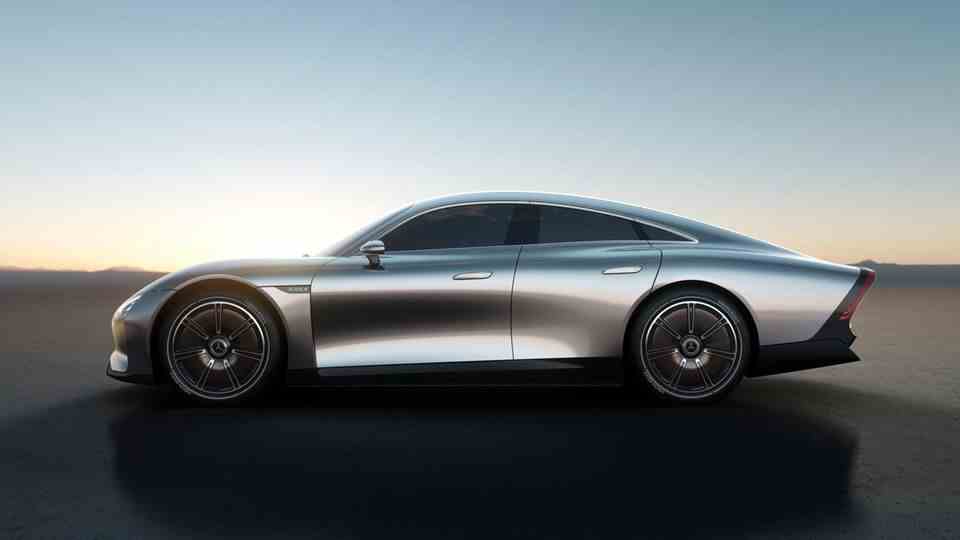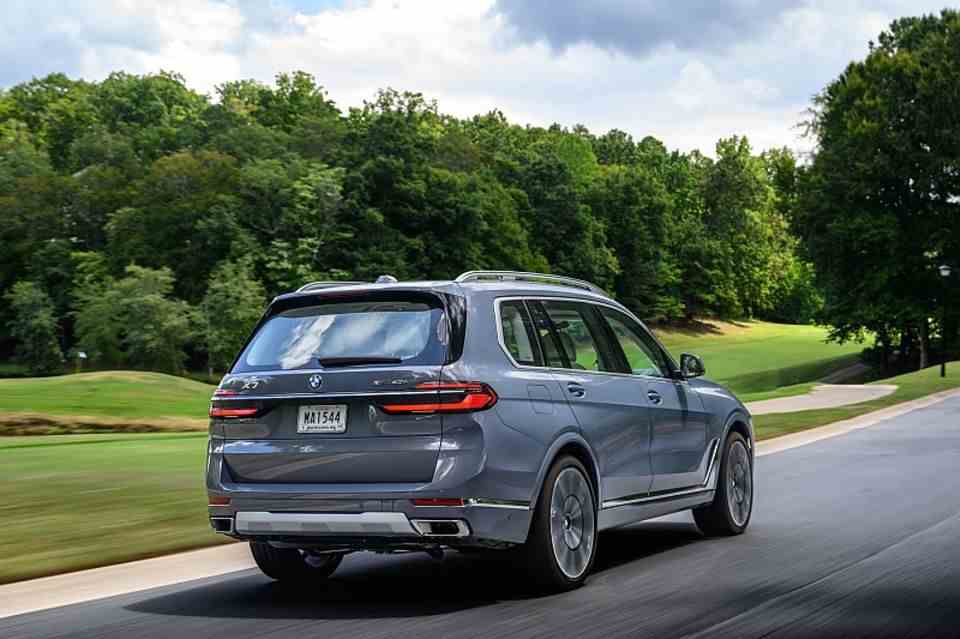driving report
BMW X7: Luxury SUV convinces in many parts – but also with room for improvement
The BMW X7 in the test
© press-inform – the press office
The BMW X7 has been technically and visually revised. Its six- and eight-cylinder engines work well with hybridization and push the vehicle along quickly. The X7 is precise and easy to control. However, there is still room for improvement in the infotainment user interface. A test report.
They are courageous at BMW, you have to give them that. With the facelift, the Munich-based company gave the X7 the name “The Sovereign”. Even with the jagged front, BMW remains true to itself, although there was a lot of criticism of the 7 Series in terms of optics. So the mighty crossover is now also looking at the landscape with narrowed eyes and anyone who wants can also have the kidneys illuminated. Love it or leave it, the people of Munich should now shrug their shoulders. After all, the big BMW Kraxler has a high conquest rate with competitors like Mercedes and is doing better than expected in Europe. However, Germany, with its two percent of sales, only accounts for a small part of X7 sales. In the important markets such as Korea (seven percent), China (21 percent) and the USA (47 percent) you are welcome to appear a little more extroverted.
But not only the optics have changed significantly, a lot has also happened in terms of technology. The X7 is now catching up with its technology brothers. “We want to raise the X7 to the level of the iX models in terms of assistance systems,” explains product manager Marco Möller. However, the refreshed X7 does not stand out from the competition when it comes to electronic helpers. Autonomous driving level 3 is not available for money or good words in the Munich SUV. After all, like the Stromer brother iX, you can record parking in a narrow parking garage, for example, and the autopilot then replicates it over a distance of up to 200 meters. The driver still has to sit behind the wheel, towards the end of the year he can stand next to the car while the X7 carries out the driving maneuvers automatically. The maneuvering aid for the trailer is certainly useful for some, but a similar function has been available on the VW Tiguan for a number of years.
That the facelifted X7 supports the driver when changing lanes and merging, and also swims independently in traffic for a while, is simply expected of an automobile in the year 2023, which BMW, according to its own words, assigns to the luxury segment. A camera monitors the driver and registers as soon as their gaze moves away from the road. The BMW Big Brother also recognizes when the driver is no longer able to drive the vehicle. If he collapses due to health problems, for example, the system brings the X7 to a standstill in the relevant lane, activates the hazard warning lights and makes an emergency call. Staying in the left lane on a freeway is anything but safe. When asked why the SUV doesn’t automatically change to the emergency lane or the right-hand side of the road, as BMW has already demonstrated, project manager Christian Tschurtschenthaler gives a refreshingly open but at the same time alarming answer: “Because automated lane changes are currently prohibited in Germany. Others Countries are more progressive there. We are in danger of falling behind.”
BMW X7: biturbo V8 engine with 530 hp
Let’s turn to a traditional core competence of the Munich car manufacturer, which is also anchored in the name – the engines. The inventors from the Research and Innovation Center (FIZ) have put their hands on all the units. The mighty 4.4 liter twin-turbo V8 with 390 kW / 530 hp is new, as is the in-line six-cylinder engine, which is popular in Germany and whose output has increased from 245 kW / 333 hp to 280 kW / 380 hp. There is also a mild hybrid electric motor integrated into the ZF eight-speed transmission, which contributes 9 kW / 12 hp and 200 Newton meters of torque. Thanks to the e-machine, the 2,415-kilogram heavy chunk of an SUV crawls purely electrically, which certainly saves a lot of consumption when starting off. Speaking of which: BMW is using 0W 12 low-viscosity oil for the first time. “We’re pretty close to the water there,” laughs engine developer Emanuel Nicolardi. The result of all these measures should be a consumption of 10.6 l/100 km.
The design of the in-line six-cylinder also plays its part, which works according to the Miller combustion process, which is defined, among other things, by the shorter opening duration of the intake valves. Driving dynamics experts will now throw their hands over their heads and groan loudly “Miller!” After all, these aggregates are not necessarily known as elastic performance miracles. But in anticipation of plug-in hybridization, this method is of course a good idea. The electric machine should make up for the disadvantages of this concept and plug any performance gaps. In our test drive, this worked really well, as did its interaction. The three-liter straight-six copes well with the mighty X7 and accelerates it from zero to 100 km/h in 5.8 seconds. What is even more important is the elasticity. The BMW engine manages that too, only in higher speed spheres does the six pots run out of air a bit. Speaking of air: Even if the rear is only adorned with two panels, the new engine has a four-pipe exhaust system installed. So you can better regulate the back pressure (keyword OPF filter) and noise suppression with the help of two flaps.
The eight-cylinder acts much more confidently, which, despite the additional weight on the front axle, also handles corners better than the smaller engine, partly because of the limited-slip differential on the rear axle and a different set-up. In which a tendency to understeer can be detected in fast, tight corners, but according to the BMW developers this is also wanted. When it comes to the steering, BMW has found its way back to the path of virtue and banned the too tight restoring forces. The controls are precise and the X7 can be steered in the desired direction without having to go to the gym first. The two-chamber air suspension does its job well and there is a clear spread between the Sport, Comfort and Eco modes. With Sport, the body is noticeably more connected, which has a positive effect, especially in combination with the 23-inch tires – a BMW premiere. Because the powerful tires with the low flanks clearly pass on small bumps and transverse gaps to the occupants and in the comfort setting the body also teeters on longer “asphalt waves”.
User interface of the infotainment could be improved
In the interior, BMW transplanted the latest version of infotainment (OS 8) from the IX to the X7. As much as we welcome the retention of the rotary push button, the Munich team gets bogged down in the user interface. For example, if you select the air conditioning for the seats, you will be overwhelmed by the graphics. It would be better if basic functions were presented in a simple manner so that they could be selected quickly. One level below are the more extensive settings, similar to those found under “Advanced Settings” on every computer. Gimmicks like the X7 arrows in the dashboard, which also indicate when a phone call is coming in and change color in line with the driving mode, are sure to be well received in China, Korea and the USA. However, the Americans shouldn’t like the moderate seats with little lateral support either. That’s not very sovereign. Especially since the X7 xDrive40i costs at least 97,700 euros.



